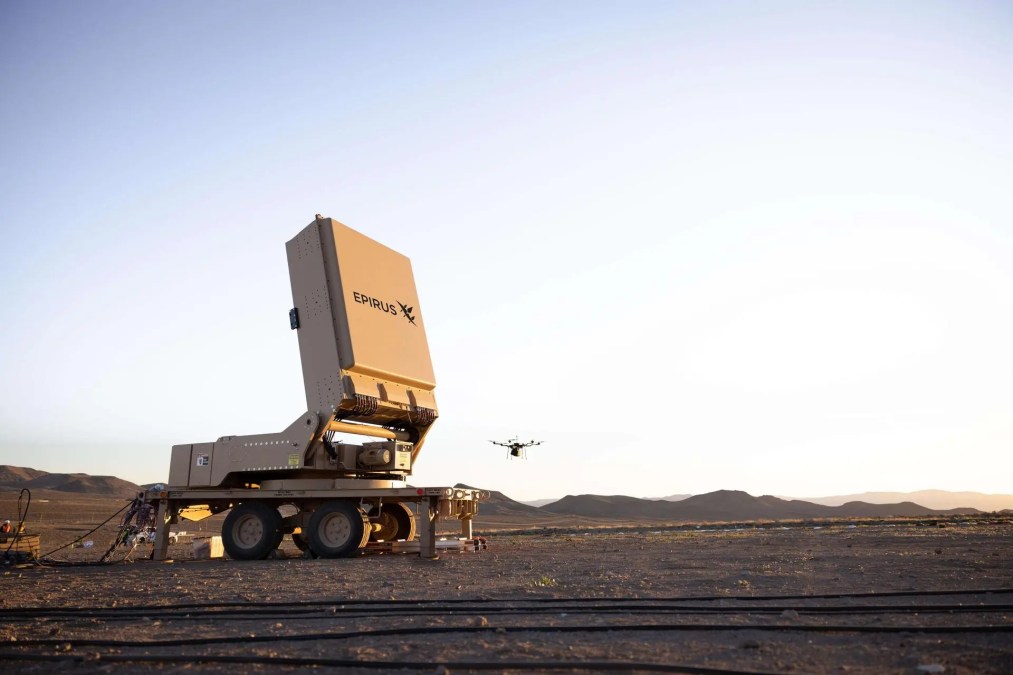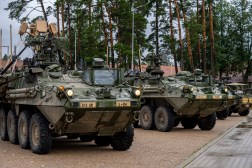Army receives first Epirus-built drone zapper prototype

Epirus has delivered the first prototype under its contract with the U.S. Army for a directed energy weapon that can fry the electronics of unmanned aerial systems, the company announced Wednesday.
High-power microwaves, which are relatively inexpensive per shot and possess nearly unlimited magazines, are considered particularly advantageous for defeating drone swarms and small UAS such as quadcopters.
“You won’t have enough interceptors to one-for-one match [the enemy’s drones]. So you have to leverage the [electronic warfare] capability and the high-powered microwave capability that we’re bringing on today,” Maj. Gen. Sean Gainey, director of the Pentagon’s Joint Counter-small UAS Office (JCO), said in August at the Space and Missile Defense Symposium.
Less than a year ago, Epirus was awarded a $66.1 million other-transaction deal from the Army’s Rapid Capabilities and Critical Technologies Office to deliver four prototypes to support the service’s Indirect Fire Protection Capability-High-Power Microwave (IFPC-HPM) initiative.
“Epirus delivered its HPM weapon after successfully completing a recent U.S. Army-sponsored government acceptance test hosted in Nevada,” the company said in a release Wednesday. “During the event, the HPM weapon system was stressed under a range of scenarios, showcasing its counter-UAS-swarm capability along with its industry leading reliability. The testing event further validated the system’s safety for personnel and fuel and marked HPM’s continued progression from Science and Technology prototype to operational capability.”
It added: “With its reduced size and weight and unique software backbone, operators can precisely and safely control the system’s HPM pulse to prosecute single UAS and swarms, depending on the threat environment.”
The Epirus prototype is derived from the company’s Leonidas system, which is equipped with solid-state Gallium Nitride (GaN) power amplifiers. Artificial intelligence-enabled GaN semiconductors enable high levels of power density without special cooling tech, according to the company
“The system is frequency agile and rapidly fires a barrage of unique waveforms to exploit the specific frequencies that UAS targets are most susceptible to. This enables tactically relevant counter-swarm ranges beyond small arms fire, even against diverse swarms,” according to a product datasheet.
The platform can be mounted on vehicles — including Army Strykers — or towed, according to Epirus.
The prototype system that was delivered to the Army is slated to undergo further evaluation and testing to “develop tactics, techniques, and procedures for future use” and to mature the technology, per the release.
Officials have highlighted the need to work through tactics, techniques and procedures for directed energy weapons, as the U.S. military prepares to field more of these types of systems.
“What we don’t know yet for directed energy systems necessarily is how to fight [with] them … [and] how to integrate kinetic and non-kinetic effectors, like directed energy, and our traditional air-defense missiles into the battlespace,” Lt. Gen. Robert Rasch, director of the Army’s Rapid Capabilities and Critical Technologies Office, said at the Space and Missile Defense Symposium.
When it comes to air-defense doctrine, “usually you get something about, like, shoot [the weapon] as far out as you can with an acceptable probability of kill. And so that generally leads to expensive missiles going out a long, long way to hit that interceptor. And we’ve got to figure out where’s our confidence base in directed energy where … I can make a conscious decision to let that missile come through because I know my DE system is going to take it out at a shorter range. We’ve got a lot to learn in that space and a lot of confidence to build,” he added.
Gainey indicated that the Epirus system will be sent to the U.S. Indo-Pacific command area of operations at some point.
“That’s going to show up to … one of our units in the Indo-Pacom area to get it out there and from an operational assessment getting capability that’s, you know, under evaluation — we haven’t gone to a full-rate production — and getting it out there to the warfighter to not only test it for us, but to provide capability to deliver against the adversary,” Gainey said.






